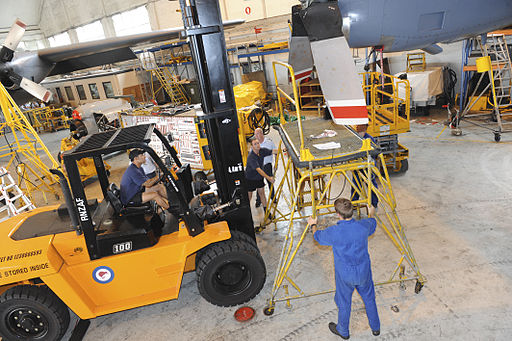

Understanding who is responsible when a forklift accident occurs is crucial for both employers and employees. Forklift accidents can result in serious injuries, fatalities, and significant legal implications.
This guide will explore the various aspects of forklift accident liability, covering the responsibilities of employers, employees, and third parties, as well as the legal and financial implications.
Forklift Accident Numbers in the US
| Factoid | Statistics |
|---|---|
| Annual Forklift Fatalities in the U.S. | 85 |
| Annual Serious Injuries from Forklift Accidents | 34,900 |
| Leading Cause of Fatalities | Tip-overs |
| Significant Cause of Injuries | Falls from forklifts |
| OSHA Training and Certification Requirement | Mandatory |
| Importance of Regular Maintenance and Inspections | Crucial |
| Employer’s Responsibility | Ensure a safe working environment |
| Impact of Employee Negligence | Can lead to serious accidents |
| Effect of Substance Abuse on Operation Safety | Significantly impairs safety |
| Common Cause of Collisions | Limited visibility or excessive speed |
Understanding Forklift Accident Liability
Forklifts are essential tools in many industries, used to lift and move heavy loads. They are commonly found in warehouses, construction sites, and manufacturing plants.
Unfortunately, forklift accidents are not uncommon, often leading to severe injuries or even death.
Knowing the common causes and the legal implications of these accidents is vital for maintaining a safe workplace.
Common Causes
Forklifts are crucial in many industries, but they can also be dangerous if not operated correctly. Understanding the common causes of forklift accidents is key to preventing them and ensuring a safer workplace.
Forklift accidents can happen in various ways due to different factors. Here are some of the most common causes:
- Tip-Overs
- Collisions
- Falls
- Mechanical Failures
- Improper Loading and Unloading
Understanding these common causes helps in implementing effective safety measures. By addressing these issues, employers can create a safer working environment and reduce the risk of accidents.
Roles of Employers and Employees
Understanding the role of employers and employees in preventing these accidents is critical.
Employers must ensure proper training and maintenance, while employees must adhere to safety protocols and operate forklifts responsibly.
Legal implications arise when accidents occur, affecting both the injured parties and the businesses involved.
OSHA Regulations and Safety Measures
Safety regulations set by OSHA are designed to prevent accidents and ensure that workplaces follow strict safety standards.
Employers are required to comply with these regulations, which include proper training for forklift operators, regular equipment inspections, and maintaining a safe working environment.
The significance of proper training and certification cannot be overstated, as it directly impacts the safety and efficiency of forklift operations.
General Safety Measures
In addition to OSHA regulations, general safety measures for operating forklifts include wearing appropriate protective gear, conducting pre-operation checks, and following manufacturer guidelines for forklift use.
By implementing these practices, both employers and employees can contribute to a safer work environment.
Impact on Business Operations
Understanding the impact of forklift accidents on business operations is also important. Accidents can lead to costly downtime, legal fees, and increased insurance premiums.
Ensuring a safe workplace helps mitigate these risks and promotes a productive and secure environment for all workers.
Employer Liability
Understanding the liability of employers in forklift accidents is crucial for ensuring workplace safety. Employers have specific legal obligations to provide a safe working environment and proper training for their employees.
Legal Obligations of Employers
Employers are required by law to provide a safe workplace for their employees. This includes ensuring that all equipment, including forklifts, is in good working condition and that employees are properly trained to use it.
OSHA regulations mandate that employers must train forklift operators to handle the equipment safely and perform regular inspections to ensure that forklifts are maintained properly.
Providing a Safe Working Environment
Creating a safe working environment involves more than just maintaining equipment.
Employers must also implement safety protocols, such as clear traffic routes for forklifts, adequate lighting, and proper signage.
Ensuring that the workplace is free from hazards and that all safety measures are followed is essential for preventing accidents.
Training and Certification Requirements
One of the key responsibilities of employers is to ensure that all forklift operators are adequately trained and certified.
Training programs should cover both the theoretical and practical aspects of forklift operation, including how to handle different types of loads, navigate various environments, and respond to emergency situations.
Certification ensures that operators are knowledgeable and capable of operating forklifts safely.
Maintenance and Inspection of Equipment
Regular maintenance and inspection of forklifts are critical to ensuring their safe operation.
Employers must schedule routine inspections and maintenance checks to identify and address any potential issues before they lead to accidents.
Keeping detailed records of all maintenance activities can also help demonstrate compliance with safety regulations.
Enforcing Safety Protocols
Employers must enforce safety protocols consistently to ensure that all employees adhere to them.
This includes monitoring forklift operations, providing ongoing training, and addressing any violations of safety rules promptly.
A strong safety culture within the organization can significantly reduce the risk of accidents.
Liability for Equipment Failure
Employers can be held liable if a forklift accident occurs due to equipment failure. This includes situations where the forklift has not been properly maintained or if defective equipment was knowingly used.
Ensuring that all forklifts are in good working condition and promptly addressing any mechanical issues can help mitigate this liability.
Consequences of Non-Compliance
Failure to comply with safety regulations can have serious consequences for employers. This can include fines, legal action, and increased insurance premiums.
Non-compliance can also damage the company’s reputation and lead to a loss of trust among employees and clients.
Steps to Mitigate Risks
Mitigating risks associated with forklift operations is crucial for maintaining a safe and productive workplace. Employers can implement several strategies to reduce the likelihood of accidents and ensure compliance with safety regulations.
- Implement comprehensive safety programs.
- Provide regular training and certification for all forklift operators.
- Conduct routine maintenance and inspections of all forklift equipment.
- Foster a safety-first culture within the organization.
- Establish clear traffic routes for forklifts and ensure adequate lighting and proper signage.
- Enforce safety protocols consistently.
- Keep detailed records of all training, maintenance, and inspection activities.
- Regularly review and update safety protocols.
- Provide appropriate protective gear for all employees.
- Engage employees in safety improvement initiatives.
Taking these steps can significantly reduce the risk of forklift accidents and create a safer working environment for everyone involved.
Employee Responsibility
Employees play a crucial role in maintaining workplace safety, especially when operating forklifts. Understanding their responsibilities and adhering to safety protocols can significantly reduce the risk of accidents.
Employee Obligations Under Workplace Safety Laws
Employees are required by workplace safety laws to follow all safety protocols and procedures when operating forklifts.
This includes attending mandatory training sessions, wearing appropriate safety gear, and reporting any unsafe conditions or equipment malfunctions.
Compliance with these laws is essential to create a safe working environment for everyone.
Importance of Adhering to Training and Safety Protocols
Proper training and adherence to safety protocols are vital for preventing accidents.
Employees must follow the instructions provided during training and adhere to the safety guidelines set by their employers.
This includes performing pre-operation checks, operating forklifts at safe speeds, and being aware of their surroundings.
Adhering to these protocols ensures that forklifts are used safely and effectively.
Role of the Forklift Operator in Preventing Accidents
Forklift operators have a direct impact on workplace safety. They must operate the machinery responsibly, avoid risky behaviors, and be vigilant about potential hazards.
This includes not overloading the forklift, maintaining a clear view while driving, and using the forklift only for its intended purposes.
Operators must also communicate effectively with coworkers to ensure safe operations.
Consequences of Operator Negligence or Misconduct
Negligence or misconduct by forklift operators can lead to serious accidents and injuries. Such behaviors include driving recklessly, ignoring safety protocols, or using the forklift while impaired.
The consequences of these actions can be severe, resulting in injuries, legal action, and even job termination.
It is crucial for operators to understand the gravity of their responsibilities and the potential outcomes of their actions.
Reporting Unsafe Conditions and Near-Misses
Employees should be encouraged to report any unsafe conditions or near-misses to their supervisors immediately. This proactive approach helps identify and address potential hazards before they lead to accidents.
Employers should create a supportive environment where employees feel comfortable reporting safety concerns without fear of retaliation.
Liability in Accidents Caused by Operator Error
If an accident occurs due to operator error, the employee may be held liable, especially if they violated safety protocols or were negligent in their duties.
Employers must document training and safety procedures to establish that the employee was aware of their responsibilities.
Understanding liability can help employees appreciate the importance of following safety guidelines.
Impact of Substance Abuse on Forklift Operation
Substance abuse significantly impairs an employee’s ability to operate a forklift safely.
Employers must enforce strict substance abuse policies and conduct regular screenings to ensure that operators are not under the influence while on the job.
Substance abuse not only endangers the operator but also poses a risk to all employees in the vicinity.
Training Programs to Enhance Employee Safety Awareness
Employers should implement comprehensive training programs to enhance safety awareness among employees.
These programs should cover the latest safety practices, emergency response procedures, and the proper use of protective equipment.
Regular training sessions can reinforce the importance of safety and keep employees updated on new safety regulations.
Collaboration Between Employees and Employers
Creating a safe workplace requires collaboration between employees and employers.
Both parties must work together to identify potential hazards, implement safety measures, and maintain open communication about safety concerns.
A collaborative approach fosters a culture of safety and ensures that everyone is committed to preventing accidents.
Contact Goldenzweig Law
If you or someone you know has been involved in a forklift accident, Goldenzweig Law can help.
Our team is dedicated to ensuring your rights are protected and that you receive the compensation you deserve.
Contact us today at 713-903-3988 to speak with a qualified car accident lawyer who can assist with your case.
Navigation
Related Posts


What is a Non Dot Recordable Accident?
Continue Reading

